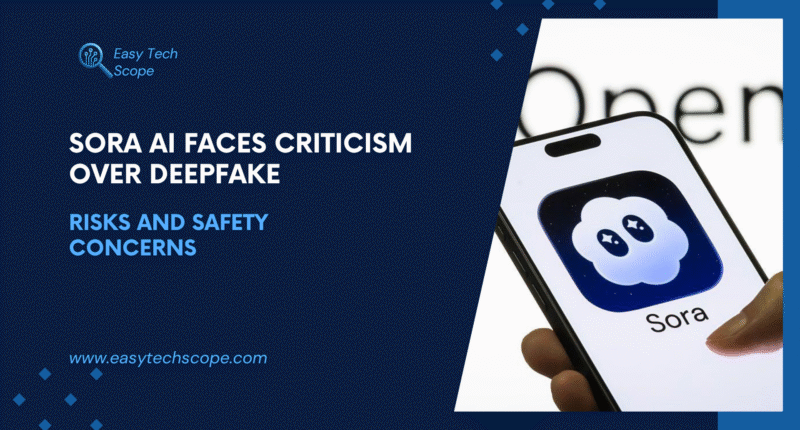The Rising Controversy Around Sora AI’s Deepfake Capabilities
OpenAI’s Sora AI, the company’s groundbreaking video-generation model, has taken the world by storm with its ability to create ultra-realistic videos from text prompts. However, alongside the excitement, a wave of criticism and concern has emerged — with experts warning about the potential misuse of Sora’s deepfake capabilities and the growing risks to online safety and authenticity.
Sora’s ability to generate lifelike human faces, voices, and environments has blurred the line between real and artificial content. While OpenAI touts the technology as a major advancement in creative and educational tools, critics argue that the same technology could be weaponized — spreading misinformation, impersonating individuals, and manipulating digital media at scale.
As the global debate around AI ethics intensifies, Sora has become the latest focal point in the conversation about AI safety, regulation, and trust in the digital age.
How Sora AI Works and Why It’s So Powerful
Sora AI is designed to turn simple text descriptions into high-quality, photorealistic video content. Users can type prompts like “a dog running through a snow-covered park” or “a person speaking at a conference,” and Sora instantly generates realistic video clips complete with natural lighting, motion, and detail.
The model combines advanced diffusion techniques, neural rendering, and large-scale training data to achieve near-human realism. This technology has massive potential for industries such as film, advertising, education, and entertainment — enabling faster, cheaper, and more accessible content creation.
However, the same realism that makes Sora revolutionary also makes it ripe for abuse. Experts warn that malicious actors could use the model to produce convincing fake videos of public figures, politicians, or ordinary individuals — a risk that could have severe social and political consequences.
Potential Risks Identified by Experts:
-
Deepfake misinformation: Fabricated videos could be used for propaganda or social manipulation.
-
Identity theft and impersonation: AI-generated videos could mimic real people without consent.
-
Erosion of digital trust: As AI fakes become more convincing, distinguishing real from fake may become nearly impossible.
-
Ethical and legal uncertainty: Global laws have yet to catch up with this level of AI realism.
Public Backlash and Regulatory Pressure
The release of Sora AI has sparked mixed reactions from both users and policymakers. While many creators and developers praise the innovation, others are calling for stricter guardrails and transparency requirements before the technology becomes widely available.
Privacy advocates argue that OpenAI must implement robust safeguards, including digital watermarking, traceable metadata, and user verification systems. Governments are also beginning to weigh in — with some officials suggesting that AI video generators should fall under stricter content moderation laws to prevent misuse.
In response, OpenAI has stated that Sora will be rolled out gradually, with limited public access and built-in detection tools to identify AI-generated videos. The company insists that protecting users from deepfake harm remains a top priority, and that collaboration with global regulators is already underway.
Balancing Innovation with Responsibility
The Sora AI controversy reflects a larger challenge facing the tech industry: how to balance rapid AI innovation with ethical responsibility. On one hand, Sora offers incredible opportunities for creativity, business, and education. On the other, it exposes society to new dimensions of digital deception that could undermine public trust in visual media.
To maintain credibility and public confidence, OpenAI — and the broader AI community — must commit to transparency, ethical use policies, and open dialogue about AI’s social impact. The future of AI-generated media depends not only on technological brilliance but also on responsible governance and collective accountability.









